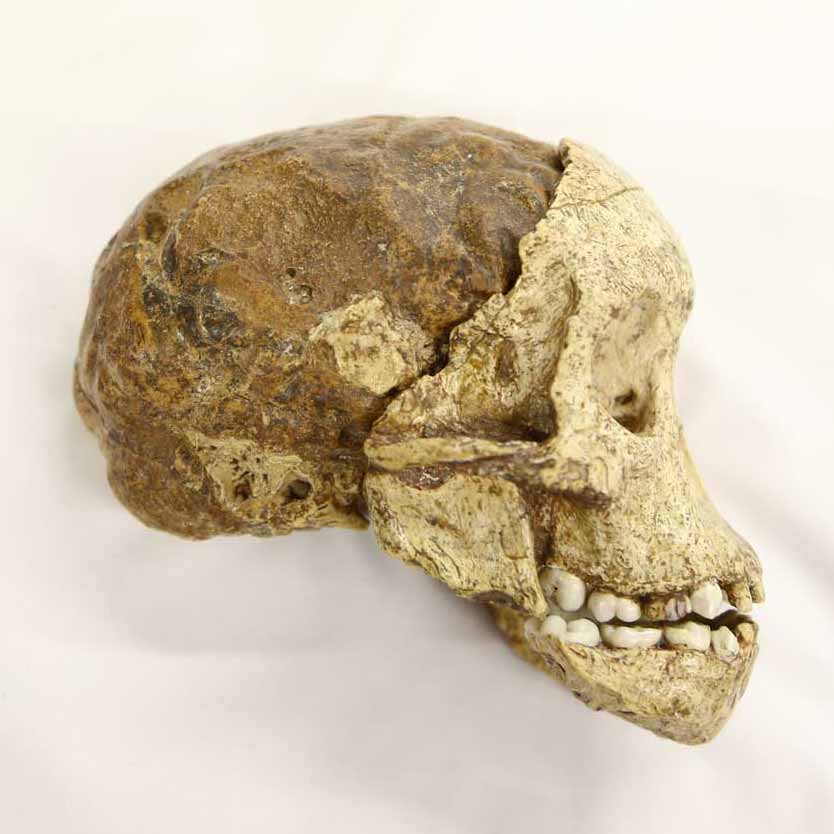Virtual lab: Paranthropus boisei with OH 5
The OH 5 fossil skull is one of the most important in the history of human origins studies. The paleontologist Mary Leakey discovered the first pieces of the fossil in July of 1959, and with her husband Louis and field crew, excavated the skull over the space of a month. Later in the year, Louis published a short article in the scientific journal Nature describing the discovery and naming the new species, Zinjanthropus boisei.

The next year, the South African anthropologist John Robinson suggested that the differences were not very great between the OH 5 skull and South African fossils attributed to the species Paranthropus robustus. He suggested that it would be appropriate to recognize OH 5 as Paranthropus boisei. While Leakey and some other scientists disagreed, many anthropologists followed this suggestion, and it is the most common way to recognize OH 5 and boisei today. Some other paleoanthropologists have suggested that the fossils attributed to Paranthropus are themselves similar enough to Australopithecus to recognize them as part of the same genus. These scientists often use the name Australopithecus boisei.
This virtual lab includes the OH 5 fossil calvaria together with the calvaria of a modern human individual and the Sts 5 fossil of Australopithecus africanus. The OH 5 individual has third molars that had just reached eruption into its maxillary dentition, and so was a very young adult at the time of its death.
As you examine the OH 5 skull in comparison to the human and Sts 5, work to identify the following features:
- The sagittal crest is an elevated ridge of bone along the midline at the top of the skull. This marks the origin of the temporalis muscles.
- A compound temporonuchal crest is an elevated ridge of bone where the neck muscle attachment and the most posterior part of the temporalis muscle attachments meet each other.
- The molars and premolars of OH 5 are impressively large compared to those of a modern human. But the canines and incisors are not larger than those of a modern human. Compared to the enormous postcanine teeth, the incisors and canines of P. boisei are quite small.
Materials in this lab
- The original OH 5 specimen is curated at the National Museum and House of Culture in Dar es Salaam, Tanzania. The model in this virtual lab is based upon a 3D surface scan of a cast in the Biological Anthropology collection of UW-Madison. A printable 3D scan of the fossil is also available from the AfricanFossils.org website, with a Creative Commons Non-commercial Share-alike (CC-BY-NC-SA) license.
- The model of the human calvaria is based on an anatomical model created by Hannah Newey. The model is available on Sketchfab with a Creative Commons Non-Commercial Share-alike (CC-BY-NC-SA) license. I reduced the polygon count of the model for this virtual lab.
- The original Sts 5 fossil is curated at the Ditsong Museum of Natural History in Pretoria, South Africa. The model in this virtual lab is based upon a 3D surface scan of a cast in the Biological Anthropology collection of UW-Madison.
Back to full list of virtual labs